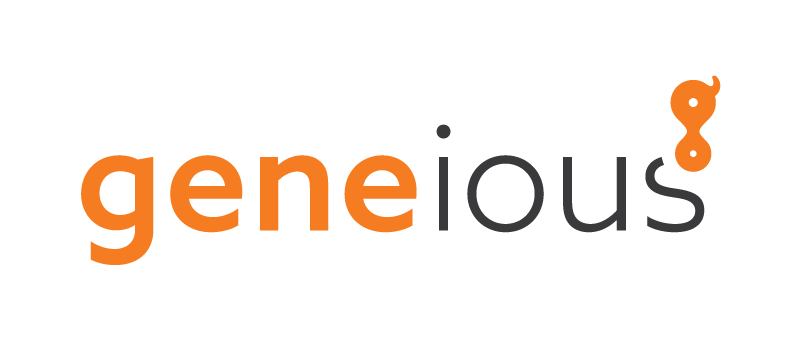Team:GeorgiaTech
From 2014.igem.org
(Difference between revisions)
| (33 intermediate revisions not shown) | |||
| Line 1: | Line 1: | ||
{{Template:GeorgiaTech/css/experiment.css}} | {{Template:GeorgiaTech/css/experiment.css}} | ||
{{Template:GeorgiaTech/css/fancyboxes.css}} | {{Template:GeorgiaTech/css/fancyboxes.css}} | ||
| + | {{:Team:GeorgiaTech/core/header|}} | ||
<html> | <html> | ||
| Line 30: | Line 31: | ||
padding: 15px 60px; | padding: 15px 60px; | ||
height:550px; | height:550px; | ||
| - | |||
border: 1px solid #cccccc; | border: 1px solid #cccccc; | ||
-webkit-border-radius: 10px; | -webkit-border-radius: 10px; | ||
| Line 39: | Line 39: | ||
box-shadow: 1px 1px 3px rgba(0, 0, 0, 0.35); | box-shadow: 1px 1px 3px rgba(0, 0, 0, 0.35); | ||
} | } | ||
| - | |||
| - | |||
| - | |||
| - | |||
| - | |||
| - | |||
| - | |||
| - | |||
| - | |||
</style> | </style> | ||
| Line 53: | Line 44: | ||
<!--main content --> | <!--main content --> | ||
| - | |||
| - | |||
| - | |||
| - | |||
| - | |||
| - | |||
| - | |||
| - | |||
| - | |||
| - | |||
| - | |||
| - | |||
| - | |||
| - | |||
| - | |||
| - | |||
| - | |||
| - | |||
| - | |||
| - | |||
| - | |||
| - | |||
| - | |||
| - | |||
| - | |||
<!--Begin Fancy Boxes --> | <!--Begin Fancy Boxes --> | ||
<div class="MainLayout"> | <div class="MainLayout"> | ||
| - | |||
<div class="ContentHeader"></div> | <div class="ContentHeader"></div> | ||
<div class="homecontent"> | <div class="homecontent"> | ||
<div class="expandedContent"> | <div class="expandedContent"> | ||
<div class="boxgrid contentBorder boxgridBig" id="box1"> | <div class="boxgrid contentBorder boxgridBig" id="box1"> | ||
| - | <img src="https://static.igem.org/mediawiki/ | + | <img src="https://static.igem.org/mediawiki/2014/1/1f/CleanWaterStream.jpg"> |
<div class="cover boxcaption" style="top: 405px"> | <div class="cover boxcaption" style="top: 405px"> | ||
| - | <h2 class="onBlack"> | + | <h2 class="onBlack">How does dissolved methane from fracking endanger our water?</h2> |
<p class="onBlackIntro"> | <p class="onBlackIntro"> | ||
| - | + | Look at this running stream and imagine how it would appear when contaminated with methane gas. If you pictured it as a flowing stream of seltzer water, then you're not far off. | |
</p> | </p> | ||
<p class="onBlack"> | <p class="onBlack"> | ||
| - | The | + | The demand for natural gas to fuel growing industries has led to the development and increased use of fracking techniques to extract methane and other natural gases from shale veins deep in the Earth's crust. In the extraction process, up to several million gallons of fracking fluid are pumped into the well, all of which must be later treated for methane and other hydrocarbon contaminants. |
</p><p class="onBlack"> | </p><p class="onBlack"> | ||
| - | Our project aims to enable | + | Our project aims to enable E. coli to produce soluble methane monooxygenase (sMMO) a protein capable of converting methane into less volatile methanol, which can then be treated by further remediation pathways or extracted for commercial use. |
| - | + | ||
| - | + | ||
</p> | </p> | ||
</div> | </div> | ||
| Line 103: | Line 66: | ||
<div class="boxgrid contentBorder boxgridMedium" id="box2" style="margin-left:8px"> | <div class="boxgrid contentBorder boxgridMedium" id="box2" style="margin-left:8px"> | ||
| - | <img src="https://static.igem.org/mediawiki/ | + | <img src="https://static.igem.org/mediawiki/2014/c/cd/EcoliHomePage.png" style="top:-1px;left:-1px;"> |
| - | <a class="cover boxcaption" style="top: 405px" href="https:// | + | <a class="cover boxcaption" style="top: 405px" href="https://2014.igem.org/Team:GeorgiaTech/Project"> |
| - | <h2 class="onBlack"> | + | <h2 class="onBlack">How can synthetic biology eliminate the methane threat?</h2> |
<p class="onBlackIntro"> | <p class="onBlackIntro"> | ||
| Line 111: | Line 74: | ||
</p> | </p> | ||
<p class="onBlack"> | <p class="onBlack"> | ||
| - | + | Our lab is equipped with the tools to synthesize new genetic sequences and generate transgenic bacteria capable of taking methane out of the water, one bubble at a time. | |
</p> | </p> | ||
</a> | </a> | ||
| Line 119: | Line 82: | ||
<!--end fancy boxes --> | <!--end fancy boxes --> | ||
| - | |||
| - | |||
<DIV class="sponsors" align="center"> | <DIV class="sponsors" align="center"> | ||
<h1 text-align="center">Our Generous Sponsors</h1> | <h1 text-align="center">Our Generous Sponsors</h1> | ||
| Line 128: | Line 89: | ||
<LI class="column" id="Macrogen" style="left: 40px;"><p><a href="http://www.macrogenusa.com/"><img src="https://static.igem.org/mediawiki/2014/3/34/Macrogen.jpg" width="274px" height="100px"></a></p></LI> | <LI class="column" id="Macrogen" style="left: 40px;"><p><a href="http://www.macrogenusa.com/"><img src="https://static.igem.org/mediawiki/2014/3/34/Macrogen.jpg" width="274px" height="100px"></a></p></LI> | ||
<LI class="column" id="IDT" style="left: 40px;"><p><div><a href="http://www.idtdna.com/site"><img src="https://static.igem.org/mediawiki/2014/2/22/IDT-Logo.jpg" width="241px" height="100px"></a></LI> | <LI class="column" id="IDT" style="left: 40px;"><p><div><a href="http://www.idtdna.com/site"><img src="https://static.igem.org/mediawiki/2014/2/22/IDT-Logo.jpg" width="241px" height="100px"></a></LI> | ||
| - | |||
| - | |||
| - | |||
</UL> | </UL> | ||
| + | |||
| + | <h1 text-align="center">Our Creative Commons Image Suppliers</h1> | ||
| + | <UL> | ||
| + | <LI class="column" id="PublicDomainPictures" style="height:100px; width:370px;"><p><a href="http://www.publicdomainpictures.net/view-image.php?image=17448&picture=fire-element"><img src="https://static.igem.org/mediawiki/2014/2/26/PDP_logo.png" alt="Fire Background" width="370px" height="50px"></a></p></LI></UL> | ||
</DIV> | </DIV> | ||
| + | <div class="clear"> | ||
| + | </div> | ||
</body> | </body> | ||
</html> | </html> | ||
Latest revision as of 18:40, 17 October 2014
 "
"







